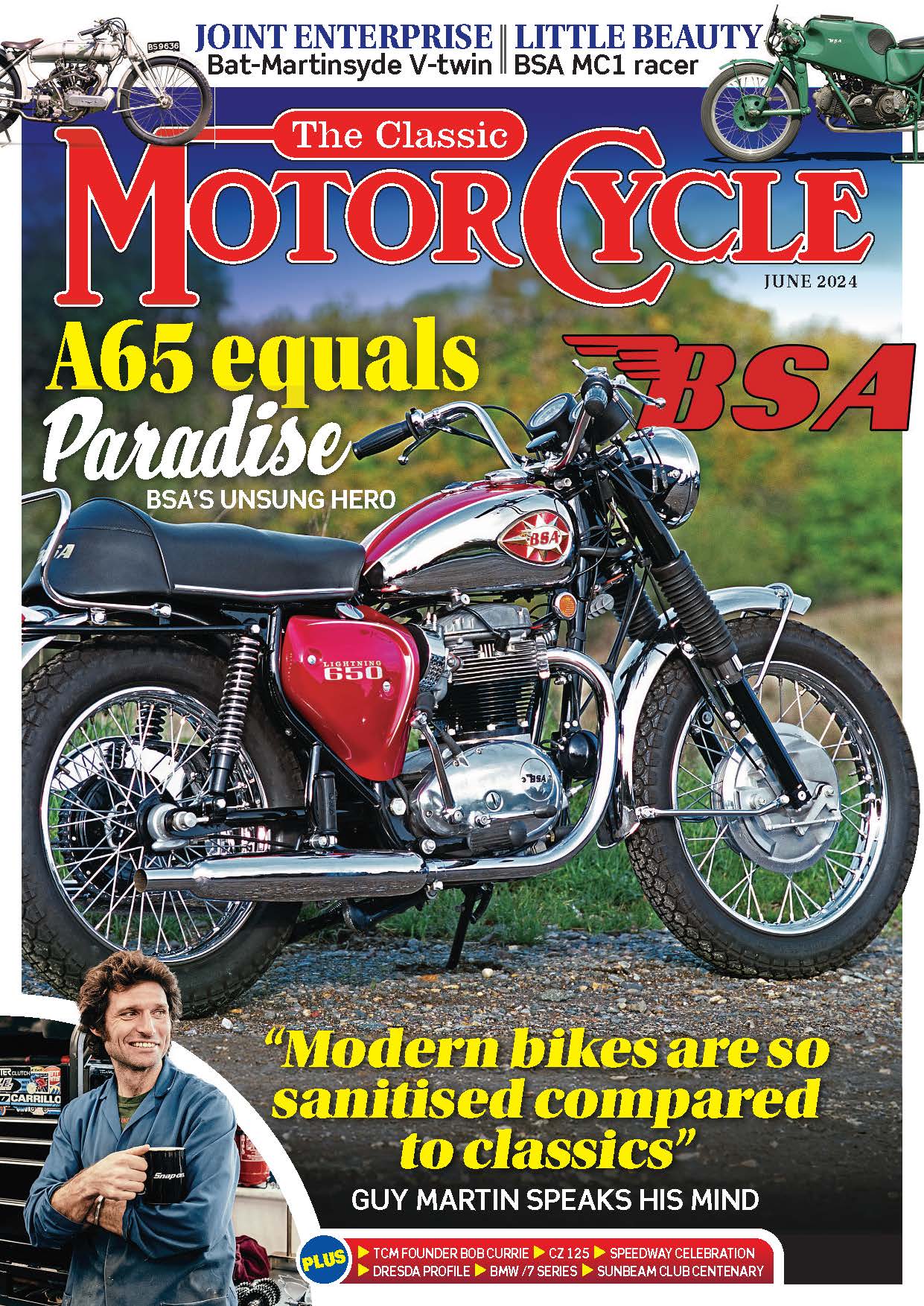 Gilding the lily
Gilding the lily
The Morini 3½ Sport is a fabulous machine in standard form, so more performance and better brakes just adds to a superb motorcycle.
Words and photographs: James Adam Bolton
Enjoy more Classic MotorCycle reading in the monthly magazine.
Click here to subscribe & save.
What can be sweeter than thrashing what at first glance would seem to be a beautiful Moto Morini 350 Sport around tight and twisty country lanes with style, sound, excitement and enjoyment? Though a 350 Sport is hard to beat for all-round Italian-based satisfaction on two wheels, Julian Radcliffe’s long-term ownership of this Morini seems to have found the answer: more horses and more brakes, because his 507cc Camel-engined Sport is a neat-handling mini rocket, stops on a sixpence and shows that not all Italian Superbikes have to be big bruisers.
When Julian Radcliffe bought his Morini 350 Sport as a round-town hack back in 1988 he probably didn’t realise that it would actually become a bike that would say: “I want to go faster. Make me go faster.” So he did, and hasn’t stopped since.
“It’s a 1978 Sport,” explains Julian, “though I suspect it might actually be earlier, and I bought it in 1988. I was already a Kawasaki GPz 550 rider, but I wanted something Italian with more noise, character and charisma. The Morini had lots of mechanical problems, was wearing an odd ducktail seat made by Nisa, high bars, and chromed mild steel discs that ate brake pads. I used it regularly for running around London, and crashed it a couple of times. I started to go to Wee Vee’s to get it sorted.”
Wee Vee’s was the legendary Morini one-stop shop in South London, now long gone, run by Benjy Straw and mechanic, the late Phil Smith. It was one of several independent Italian bike specialists in London around 20 years ago that have now sadly disappeared due to high rents and times moving on.
“In the last crash, the forks were wrecked and the frame bent, so Nigel Hill at Saxon Racing fixed the frame. I wanted to change things on the bike after the crash, starting with the brakes, so I went to Spondon who made me a 320mm floating disc, for which Harrison Billet supplied a caliper and a bracket to attach it to the Morini forks. The uprated disc setup then proved to be too much for the original Grimeca master cylinder, so I fitted an adjustable ratio AP Lockheed master cylinder – think it was off an Aprilia.”
Looks like at that point the modifying disease had well and truly set in for Julian, and why not, no reason in riding something that’s not quite right just for the sake of originality, is there? “No,” agrees Julian, “so the next step was to alter the riding position. I got hold of some alloy Artesiani rear sets, but they snapped too easily, so I asked Alex Jones-Dellaportas who worked at Motodd to CNC machine me some replacements. He did a wonderful job, based on the Artesinis, but much stronger, and they’re beautiful and work well. The original Tomaselli bars were broken in the crash, and anyway weighed something like 1kg, so I replaced them with some clip-ons manufactured by Spondon that are half the weight at 500g. At that point, I was reasonably happy with how things were, and rode the Morini to Italy, accompanied by a friend on a Moto Guzzi Le Mans.” Mmm, maybe travelling with an 850 wasn’t the best thing to do? “Yes, you’re right, it was a struggle to keep up, and it was after that trip that I realised the 350 motor was just too underpowered for what I wanted. So I was fortunate, and found a running wreck of a Morini Camel (Morini enduro 500) with the intention of eventually using the motor in the Sport. Morini were trying to keep up with the Honda Transalps of the day with 507cc and their hotter L5 cam. It’s a common swap for people who love their Morinis but want a bigger motor.”
Julian continues: “I rode the Camel around for a bit, then the motor got very rattly, so I had it rebuilt by Phil Smith, using a plain phosphor bronze main bearing with improved oil feeds – standard white metal bearings were hard to get hold of at the time. New piston rings, and that was it, so apart from the bottom end it’s a standard 507cc motor using 28mm carbs.”
Do you have to mess around with mounting brackets or is it a straight replacement in the frame? “Well, the 500 cylinders are very slightly taller, so I have used K&N air filters rather than the stock air box which doesn’t fit any more. Apart from that, it’s an easy fit into the frame and you keep what you had before. I’ve used a 520 chain, lighter than a 530, and used the original sprockets. The ignition system is the Ducati Elettronica that works very well, and of course on the Morini there are the Heron heads. I like the modular system that Morini used to produce different models.”
This is true, and Moto Morini had always found ways of exploiting a particular engine configuration as much as possible. Race success with the 175 Settebello and 250 GP machines, plus associations with high-calibre riders including Agostini, had helped to raise the firm’s profile and the popularity of Morini’s mainly single cylinder machines was high. In 1969 Morini’s father founder, Alfonso Morini, died. But rather than thwarting the company’s fortunes, Alfonso’s death coincided with the dawn of a new era for Morini which, within a few years, became synonymous with V-twin machines like Julian’s. The engineer and designer behind Morini’s V-twin revolution was Franco Lambertini, a Ferrari-trained engineer from Modena. The V-twin was chosen as the engine for Morini’s future for its character, innate smoothness and lesser tooling costs than for multi-cylinder motors, which would have been prohibitive for a small operation like Morini. Lambertini also opted for the then unheard of choice (in motorcycle production at least) of using Heron cylinder heads, though he’d already used the Heron head on the 125 Morini Corsaro Regolarita in 1971. The Heron principle – already used in cars and F1 racing – used a flat-faced head and vertical valves, with combustion recesses formed into the piston crown rather than the cylinder head. Other peculiarities included the toothed belt to drive the camshafts, six-speed box, dry multi-plate clutch, and completely electronic ignition. The compact 72-degree V-twin engine layout allowed a short wheelbase which aided handling. A prototype 350 was exhibited at the Milan Show in 1971.
The 350 went on sale in Italy in 1973. The GT (or Strada) was the first model to appear and was highly rated for its performance, power output and low fuel consumption. The Sport was announced for 1974. Increased performance came from higher compression pistons and a more radical camshaft. And with its clip-ons, short seat and huge 230mm Grimeca twin SLS front drum the new model looked like a Sport should. Both bikes performed well in every area, including top speed and acceleration, but at 60-65mpg Morini fuel consumption was much better than Japanese two-stroke opposition, such as Yamaha’s RD350. Unfortunately Morini just couldn’t compete on price. The Sport cost £877 – £347 more than the popular RD350. The Italian V-twins also had poor quality switchgear and slightly suspect finish. Even so, the development potential of Morini’s motor afforded the bike’s longevity. A hike in capacity seemed an obvious route. Upping capacity from 350cc to 500cc was a natural step for Morini and was easily done, using bigger bore barrels and a longer stroke crank in the modular engine cases. Morini debuted a 500cc prototype at Milan in 1975, though production bikes didn’t reach showrooms until 1978. The new bike, a five-speed tourer called the 500W, displaced 478.6cc with a bore and stroke of 69x64mm. However the capacity increase didn’t improve performance greatly. Torque was markedly superior to the 350, making the 500 feel on the road more like a relaxed ‘sports tourer’ compared to the revvy 350. A five-speed gearbox was consequently used (six-speed from 1982). The 1983 K2 350, seen essentially as the replacement for the 350 Sport featured Nickasil bores and a left foot gear change for the first time – testers mentioned the gearbox was the best it had been on a 350 Morini. A chrome or black exhaust system was offered, and brake discs were plated. The K2 ran until 1987, and the later models had a frame-mounted fairing. The last Morini 350 was the striking Dart, built by the then parent company Cagiva in 1989, and a 400cc version lived on until 1991, replaced finally by the Cagiva Mito, which was itself a cracking little bike.
Read more in the July issue of TCM – on sale now!
Advert
 Enjoy more The Classic MotorCycle reading in the monthly magazine. Click here to subscribe.
Enjoy more The Classic MotorCycle reading in the monthly magazine. Click here to subscribe.











